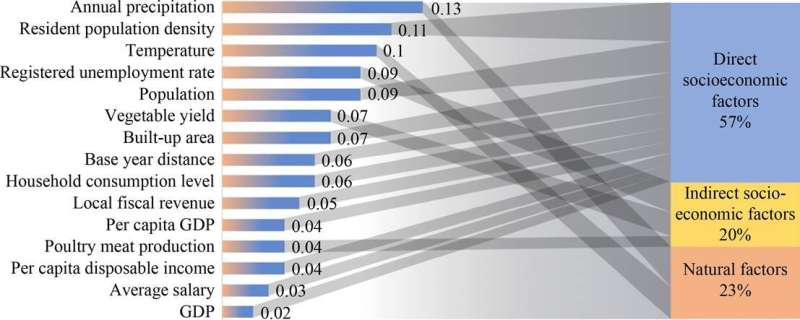Prediction of municipal solid waste generation using a machine learning multi-city model

Ever-increasing solid waste production has been threatening natural environment and human safety in recent years. With increasing urbanization worldwide, municipal solid waste (MSW) has increased significantly. The integrated management of MSW is an effective method, but the accurate prediction of MSW generation is a complex problem. Some traditional prediction models (multi-variable linear regression model, time-series analysis model, etc.) are successful using simple methods, but they usually select a basic mathematical model in advance, which limits the ability to truly reflect the characteristics of MSW.
Machine prediction models with high accuracy, which can obtain new complex data and mine them in depth, are increasingly used to create short-, medium- and long-term predictions for MSW generation. Among them, algorithms such as artificial neural network (ANN), support vector machine (SVM) and gradient boost regression tree (GBRT) have been employed to forecast MSW generation. However, the lack of a high-accuracy model based on large-scale data collection and a wide range of influence variables limits the broad applicability of the model.
To meet the needs of the large-scale comprehensive treatment and realize the short-term MSW generation prediction, Prof. Weijing Lu from Tinghua University and team members have worked jointly and used a wide range of data (countrywide, city-based) from 130 cities across China, and multi-level feature variables (e.g., socioeconomic factors, natural conditions and internal conditions) to establish a machine learning multi-city model of MSW generation with high accuracy. Their work analyzed and explored the waste management models of two typical large cities (Beijing and Shenzhen) in China. This study, titled "Development of machine learning multi-city model for municipal solid waste generation prediction," is published online in Frontiers of Environmental Science & Engineering.
In this study, a database of MSW generation and feature variables covering 130 cities across China was constructed. Based on the database, an advanced machine learning (GBRT) algorithm was adopted to build the waste generation prediction model (WGMod). In the model development process, the main influencing factors on MSW generation were identified by weighted analysis. The selected key influencing factors were annual precipitation, population density and annual mean temperature with the weights of 13%, 11% and 10%, respectively.
The WGMod showed good performance with R2=0.939. Model prediction on MSW generation in Beijing and Shenzhen indicates that waste generation in Beijing would increase gradually in the next 3-5 years, while that in Shenzhen would grow rapidly in the next 3 years. The difference between the two is predominately driven by the different trends of population growth.
This study established a database of MSW generation and feature variables with 1,012 data sets covering 130 cities across China. The developed WGMod performs reasonably well and is very suitable for predicting MSW generation in China. This study provided scientific methods and basic data for a multi-city model development for MSW generation.
More information: Wenjing Lu et al, Development of machine learning multi-city model for municipal solid waste generation prediction, Frontiers of Environmental Science & Engineering (2022). DOI: 10.1007/s11783-022-1551-6
















